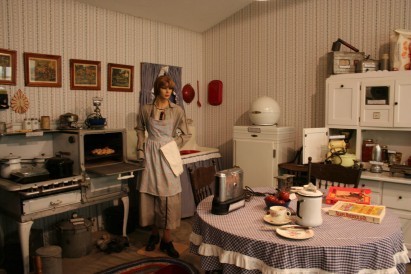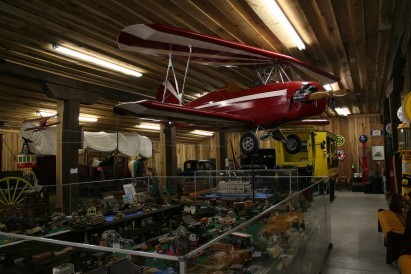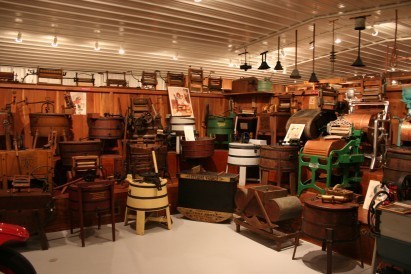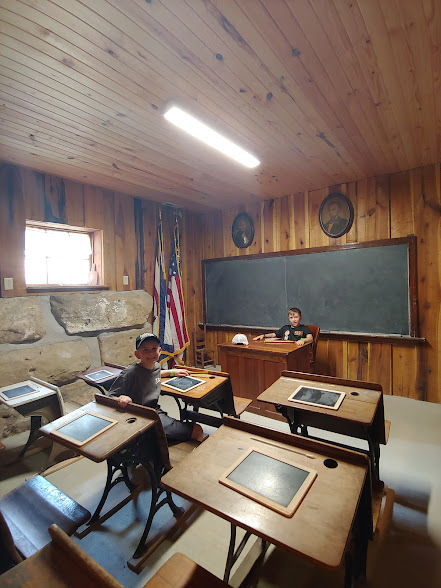
Our award-winning museums trace their roots to a private collection of antiques and artifacts stored in a 19th-century Dairy Barn (now the Barn Retreat Center).
In 1996, Co-founders Mike and Henriella Perry opened the collection to public viewing for one day a year, hoping visitors would learn from this region’s rich cultural heritage. Thus began Heritage Farm’s museums as we know them today, where thousands of visitors annually explore seven uniquely-themed structures housing a variety of exhibits.
Start by viewing an 1850’s Appalachian home and experience the rapid progress of early settler life through a century, with displays highlighting areas such as electronic communication, a model railroad display, leisure and entertainment, clothing, and more! The Progress Museum is also home to the fully-functional Artisan Guild Print Shop.

Experience a turn-of-the-century transportation revolution in the Transportation Museum! See the first frontier wagons that rolled into these hills from east coast settlements and learn how innovations in transportation changed the way we travel through to the present.

Heritage Museum preserves the “Original Collection” of early Appalachian artifacts that were the beginnings of Heritage Farm Museum & Village. Wind through the halls that construct a timeline of regional culture from indigenous tribes to today.

Step into the hub of day-to-day mountain life as the first building ever constructed at Heritage Farm takes you back to the days when the General Store, or Mercantile, was the main source of commerce around.

In the Industry Museum, guests are invited to learn about some of the most important businesses from West Virginia’s history: salt mining, coal mining, and glass production.

Designed for children to have a fun, firsthand experience with pioneer activities, the Children’s Activity Museum is also home to a working, interactive honey bee hive! Milk the cow, collect the eggs, and pump water in a truly unique farm experience for children of all ages.

Before public education, individual mountain communities would have to provide for themselves, and one educator would typically teach all ages between 6-13. Our school house sits on the precise former location of Ratcliff School. It has been restored to its original condition for you to explore how the first schools were introduced into these narrow hills!

